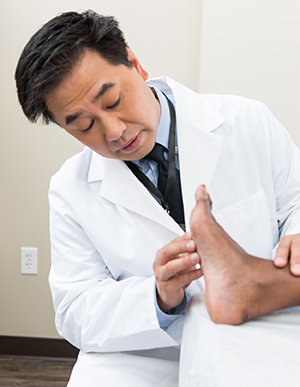Diabetes: Treating Minor Foot Infections
Diabetes: Treating Minor Foot Infections

Get treatment
If your healthcare provider finds a minor infection, you’ll be started on a treatment program. The goal is to heal the infected area while keeping the infection from spreading:
Your healthcare provider will examine and clean the infected area.
The infected area will be measured (length, width, and depth) to stage it. That way, your entire wound care team can tell if the wound is healing or getting larger from one appointment to the next.
You may be given antibiotics to fight the infection. Take your antibiotic according to the instructions on the bottle. Take all the medicines you are prescribed, even if the sore begins to look better. If you don’t, the infection will not go away and may spread.
You may be asked to keep the infected area dry.
In certain cases, you may be told to keep your feet elevated or to limit walking.
Follow any instructions you are given regarding changing bandages or soaking your foot.
Follow-up care
Even with antibiotics and other treatments, a foot infection may take a long time to heal. For best results, be sure to keep all your follow-up appointments. These help make sure that your treatment is complete. They also allow your healthcare provider to make sure you’re healing properly.
When to call your healthcare provider
Call your healthcare provider right away if you have any open or infected areas on your feet. An infected area may be sore, look red, feel warm, be swollen, and have drainage.
Also call your healthcare provider if you have any of the following:
Corns, calluses, or bunions on your feet
An ingrown toenail
Itching or cracking between your toes
Constantly cold feet
Pain or cramps in your legs or feet while walking
Skin color changes
Updated:
April 04, 2018
Sources:
Clinical manifestations, diagnosis, and management of diabetic infections of the lower extremities. UpToDate
Reviewed By:
Brown, Kim, APRN,Hurd, Robert, MD,Image reviewed by StayWell art team.